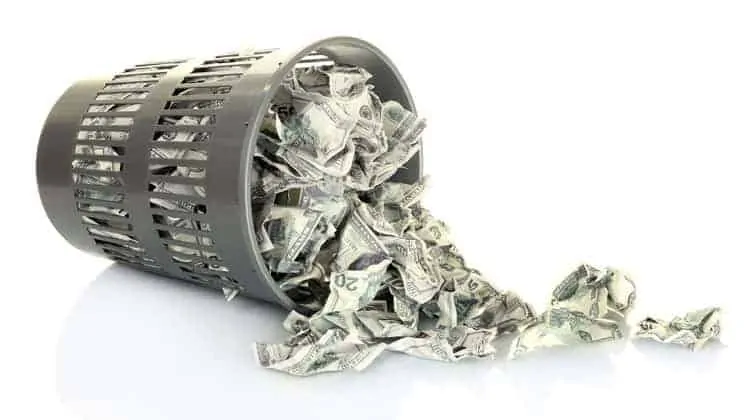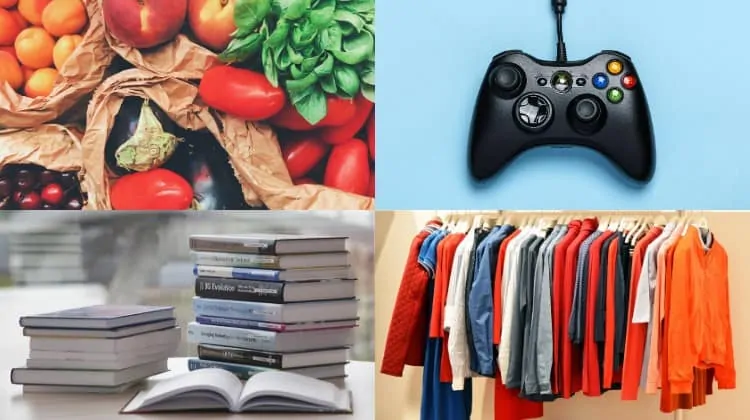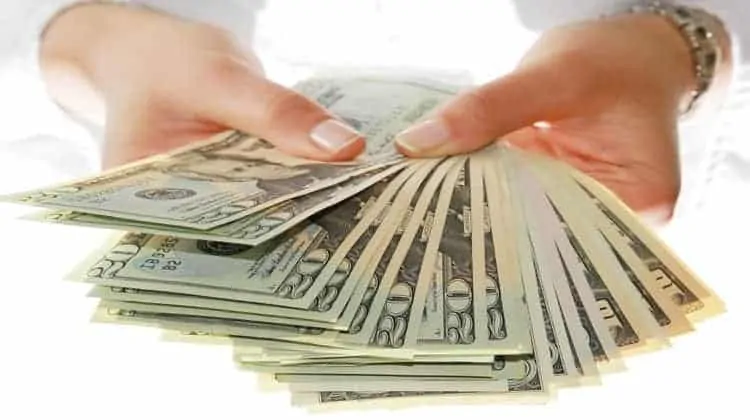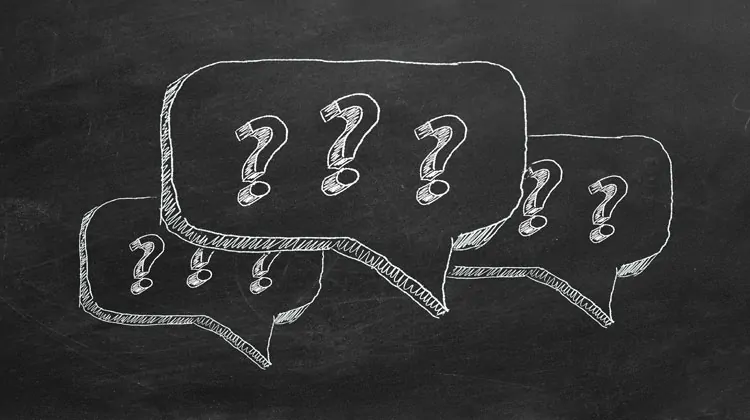THIS POST MAY CONTAIN AFFILIATE LINKS. PLEASE SEE MY DISCLOSURES FOR MORE INFORMATION
There is an old saying that goes, one man’s trash is another man’s treasure.
For most of my life, I disregarded this saying.
After all, when I drive down the street and see garbage cans at the end of driveways, I am never curious to look through the trash to find anything.
My feeling is if it is at the curb on trash day, it’s junk.
But not everyone feels this way.
In fact, many people take the complete opposite view and are into dumpster diving.
These people skip the trash cans at the end of the driveways and opt instead for dumpsters behind businesses.
By doing this, they hope to strike gold, and many people do.
As a result, dumpster diving is all the rage nowadays.
It’s the new way of earning money.
If you have never heard of the concept then you’re in the minority. It’s a practice that promises to give you great returns.
But is dumpster diving even legal? How do you get started with dumpster diving?
Let’s get to know more about dumpster diving and how it can change your fortunes.
Table of Contents
Your Ultimate Guide To Dumpster Diving
What Is Dumpster Diving?
The phrase dumpster diving first emerged in the 1980s as rampant consumerism resulted in wastefulness and the search for better items caused people to throw away perfectly fine items.
Dumpster diving is known by different names all around the country and the world.
Therefore, it is important for you to know these terms if you want to be successful.
Here are the common alternative names dumpster diving can go by:
- Curb shopping
- Containering
- Trash picking
- Skipping
- Totting
- Skip salvaging
- Skip diving
At its most basic, dumpster diving involves salvaging waste materials in large industrial, construction, residential, and commercial containers to find valuable items that are of no use to the original owner.
In simple terms, you go through trash to find items that have been thrown out by the owner but can be sold in the market.
Some of these materials may be sold on an as-is basis and some may require some work to use or resell.
It should be mentioned that dumpster diving is not only limited to dumpsters.
It involves everything from household waste containers to small dumps.
Technically speaking, if there’s trash, there’s an opportunity to make some money.
Many call it a foraging technique and it involves picking different items through a mix of trash.
Some look for materials and some try to find metals that can be sold in the market.
Others go dumpster diving for food.
And finally, some people opt for dumpster diving to find items of daily use such as furniture and clothing.
Dumpster diving was earlier used by the poor to find what they needed.
However, it has now turned into a profession.
What Items Are Of Value When Dumpster Diving?
Here are some of the main items people look for when they go dumpster diving.
Food
It is surprisingly common for people to throw away food, especially in developed countries like the US.
In fact, reports indicate that we waste about half of our food.
As a result, there are a lot of edible items in trash cans.
This waste has given birth to freeganism as well.
Moreover, in many parts of the world, there are freegans, charities, and organizations that work to collect leftover food from restaurants and supermarkets to distribute to those in need.
Dumpster diving for food is growing in popularity due to its many benefits.
The Good Samaritan Food Donation Act also helps the cause as it encourages food donations.
If you want to go dumpster diving for food, try to stick close to restaurants and food markets to increase your odds of success.
Periodicals And Books
It is common for booksellers to remove the covers of books and other such items as a proof of unsold merchandise.
They typically dispose of these items in the trash.
Similarly, offices, department stores, and other establishments also do away with such items on a regular basis
These items are readable but most come with disclaimers against their sale or existence.
In fact, many in the past have gotten into legal trouble for collecting and selling such items but it’s still a business in many parts of the world.
If you want to go dumpster diving for books, try to stay close to libraries.
Returned Items
It is surprisingly common for manufacturers to discard returned items instead of wasting time and money to repair them.
Most of these items are faulty and hence returned.
These can be very valuable to other individuals.
For example, imagine a school bag with an incorrect spelling of ‘school’ on it.
A customer may not be interested in buying it and the manufacturer may not be interested in correcting it.
But somewhere someone may be interested in buying the school bag at a reduced rate since it will still serve its main job, to carry books and other such items to school.
If you want to go dumpster diving for returned items, try to stay close to retail stores like Walmart.
School Supplies
We spend about $510 per household on school supplies. This is a huge amount that can be saved with the help of dumpster diving.
Many people get rid of their school supplies at the end of the year. These include stationery items, notebooks, and even backpacks.
A large number of these items have months or years left in them. There is a huge demand for these items in the market.
Plus, you may also keep them for your own use if you have school-age kids at home.
If you want to go dumpster diving for school supplies, try to stay close to educational institutions.
eWaste
A large number of consumer electronics depreciate at a rapid pace.
Some need expensive repairs and some are of no use due to the changing technology.
In fact, many are considered obsolete within months and users have no option but to throw them away.
Consider personal computers.
Most owners find it easier to dump the hardware than to donate the items or find a repair shop.
Many of these old consumer goods are in working condition and some require minor work.
These can be highly valuable.
In fact, there are a large number of groups like reBOOT, Geeks Into The Streets, Computerbank, and Free Geek, working to refurbish old equipment for educational purposes or charity.
Moreover, it is also not uncommon for vendors to dispose of unsaleable items as landfill.
A very famous story is of the Atari burial in Alamogordo when the video game market crashed in 1983 and vendors buried thousands of gaming consoles that were excavated in 2014.
Another famous story is of The Castle Infinity video game that was brought back to life by a fan who found its servers in working conditions from a dumpster.
If you want to go dumpster diving for eWaste, try to stay close to electronic stores.
Clothing
What do you do with your old clothes? You most probably throw them away.
In fact, according to reports, each US household throws away about 80 pounds of clothing in a year.
This is a huge figure that shows just how much potential there is when it comes to dumpster diving.
The interesting thing is that it’s not only individuals who discard of clothing items.
Manufacturers, vendors, and thrift stores also often do the same.
They throw away all kinds of items including designer items that are worth thousands in the secondary market.
Clothing items picked from dumps and landfills often sell like hotcakes as many have minor issues and some are thrown away for no reason other than simply because they’re old.
If you want to go dumpster diving for clothing, try to stay close to textile factories.
Metal
Many big corporations have joined dumpster diving due to the potential of finding different metals including gold and silver.
While the most common metal found is aluminum, many are lucky to find more precious metals as well.
These metals can be recycled and used for different purposes.
If you want to go dumpster diving for metals, try to stay close to factories and construction sites.
Wood
The process of salvaging wood is known as urban lumberjacking.
Most wood collected is used in home construction projects.
If you want to go dumpster diving for wood, try to stay close to furniture stores.
Legal Considerations Of Dumpster Diving
It’s important to ask “is dumpster diving legal?” before you give it a try.
Unfortunately, there is no straight yes or no answer to this question.
In some circumstances, dumpster diving is legal. In others, it is illegal.
If you ask someone “is dumpster diving illegal?”, they’ll most probably say it is.
But that’s not the truth.
There are instances when dumpster diving is perfectly legal.
Some technicalities get involved when it comes to the legal aspect of dumpster diving.
The biggest is that since most dumpsters are located on private properties, divers may be subjected to trespassing.
Technically speaking, dumpster diving is not illegal as an act but in some circumstances, it may not be fully legal.
It would not be wrong to state that “dumpster diving is legal in the US except where prohibited by local regulation.”
A 1988 Supreme Court Ruling concluded that when you throw an item outside, it becomes a part of the public domain.
The ruling stated:
It is common knowledge that plastic garbage bags left on or at the side of a public street are readily accessible to animals, children, scavengers, snoops, and other members of the public.
However, if the item is lying in a dumpster that’s secured with a fence or marked “No Trespassing,” then you may be ticketed, questioned or even arrested for dumpster diving.
While it’s not fully illegal or legal, the law uses different tactics to prevent divers from indulging in this activity. These include:
- Arrest or ticket for littering. As a result, make sure to not cause a mess when you go dumpster diving.
- Arrest or ticket for loitering. Therefore, do not cause a scene by blocking the road, or refuse to leave the area.
You will not get into legal trouble unless someone calls the police or dumpster diving is illegal in the town or state you are in.
This is why one of the most important dumpster diving tips is to remain courteous when someone tries to talk to you while you’re in the process of searching the dumpster.
In all, dumpster diving is not illegal unless you are on a private property such as a shopping mall or someone’s backyard.
In addition to this, you can also get into legal trouble if it’s proven that you intended to dumpster dive with malafide intentions.
In other words, you wanted to cause someone harm.
Best Places To Go Dumpster Diving
When it comes to dumpster diving tips, some places are more rewarding than others to find good stuff.
Let’s have a look at some of the best places to go dumpster diving.
Rich Neighborhoods
Since rich people usually like to upgrade their house, wardrobe, etc., they often throw away items that can be of use to you.
This can be tricky because you need to stay away from personal property such as a dumpster next to a residential building.
You can, however, target public dumpsters or even trash cans along the side of the road.
Residential Neighborhoods
Don’t make the mistake of only focusing in the wealthier areas.
You can score big in every day towns too.
Many people will put out perfectly good items to the curb because they don’t want to go through the hassle of selling it.
In this case, you need to use common sense.
Most people aren’t throwing away good items in trash bags.
They are tossing larger items like furniture and other electronics.
Another option here is to find out where yard sales are.
You will find that a good number of people put the items that didn’t sell at the end of their driveway for free.
This can be another easy way to get free stuff.
For example, I have a friend who did this and found brand new clothing with tags marked for free.
She took the clothes, posted them on Facebook Marketplace, and made a lot of money.
Apartment Complexes
Apartments tend to be a great place to rummage through people’s trash.
With limited storage space, they will throw out items all the time.
You might be able to find some great things in an unlocked dumpster here.
Just make sure you are permitted to first.
Some complexes have strict rules on dumpster diving.
Mega Malls, Strip Malls, And Retail Stores
Stores like Target, Walmart, and Five Below are usually the best places to dumpster dive as they can often throw away items that they do not need.
Three of the most popular retailers to dumpster dive at are Ulta, Five Below, and Game Stop.
Here are some details for each.
Dumper Diving At Ulta
Dumpster diving at Ulta is a hit or miss game.
You either will luck out and find some great products or you will find nothing but trash.
When you do find items, many times it will be product testers or samples. In other words, it will be opened and partially used items.
The best use for this then is personal use and not ideal for resale.
Additionally, it is important to know that most Ulta stores have a process they follow for their discarded items.
They are supposed to destroy products before throwing them in the dumpster and then lock the dumpsters.
But, not all Ulta stores follow this process and throw out products and do not lock the dumpster.
Added to this, when returns are made, they are not resold or restocked in the store. They are discarded.
For this reason, dumpster diving at Ulta should not be ignored.
For more tips on dumpster diving at Ulta, check out the video below.
Dumper Diving At Five Below
Five Below is a higher end dollar store that has comparable items, just a little better.
What makes dumpster diving at Five Below a jackpot is they throw out brand new items all the time.
Because of the low price point, it doesn’t make sense to try to resell or restock the items, so Five Below throws them out and writes it off as a loss.
As a result, dumpster diving at Five Below should be on your short list of dumpsters to check out.
Below is a nice video of a man going out and dumpster diving at Five Below and other stores.
It is worth your time as it shows that you won’t always score products.
One note about the YouTube videos on dumpster diving. There are a lot of videos out there and many are not worth your time.
The reason for this is because the people making them are making money off the videos and encourage you to follow their channel, comment, or sign up for their list.
While there is nothing wrong with this on the surface, some of the videos I watched had the first 3 minutes doing this.
There was zero content on dumpster diving.
Dumper Diving At Game Stop
Finally there is dumpster diving at Game Stop.
While many people will raid the dumpsters at Game Stop hoping for Playstation or Xbox gaming consoles, finding these are rare.
More than likely you are going to find posters and gaming guides, as well as accessories.
This can be great for reselling purposes, but not if you are hoping for consoles and games.
You will find games from time to time, but don’t go dumpster diving at Game Stop if your goal is to find free video games or consoles.
As a result, before you go, make sure you do some homework so that you are not disappointed or have unrealistic expectations when dumpster diving in the waste of stores.
Factories And Electronic Markets
Most factories have big dumpsters where they throw trash.
However, it can be risky if the dumpster is inside the vicinity of the factory.
Construction And Demolition Sites
Workers usually throw away items that they do not need.
Such goods can be of use to you hence these sites can be a good option to go dumpster diving.
Items can include wood, tile, grout and cement mix, and even electrical wiring and tools.
Restaurants, Bakeries, And Grocery Markets
Restaurants and other eateries usually throw away leftover food at closing.
Many people following freeganism go dumpster diving for food and pick their food from dumpsters near grocery stores and restaurants.
The reason is simple.
If a product at the grocery store is past its sell by date, the store cannot sell it.
But this doesn’t mean the food is spoiled. If it is a canned good, it is perfectly safe to eat. It just cannot be sold.
Because the grocery store can’t legally sell the item any longer, they toss it, resulting in hundreds of pounds of food waste in the garbage every year.
Processing Plants
You will find a lot of valuable items near processing plants including defective pieces that can be of use to you.
Independent Furniture Stores
You might be able to get some good quality furniture for free by checking out the dumpsters of furniture stores.
These smaller stores don’t have the money or requirement to send items back to distribution centers that get returned.
As a result, they might choose to write off the item as a loss and throw it away.
You could even find items that might be slightly damaged here too.
School and University Campuses
Educational institutions throw away a lot of trash including furniture, electronics, and books.
As a result, they are gold mines for finding useful items to use and sell.
To take this point one step further, visit the dumpsters on college campuses when the school year is over.
Many college students will throw out items in the dumpsters near the college dorms instead of storing them for the summer or having to transport them back home.
This can be of use to you and because of this, these institutions can be a good place to go dumpster diving.
And take note if the college is in a small town.
A college town will have a lot of students living off campus.
This means you can find great items in the trash outside of the college.
Craigslist
While this isn’t dumpster diving in its truest form, people do list a lot of their “trash” in the free section on Craigslist.
When I have browsed through this section I’ve found some really great items.
The only catch is you have to be fast as many people scour this section for free stuff and the items go fast.
Dumpster Diving Tips: How To Profit
So you know what dumpster diving is and where to find the items but you do not know what to do with the items.
Here are some ideas for how you can use and make money on the items you source when dumpster diving.
Sell Online Or Hold A Garage Sale
The best option is to put the items for sale on websites like Amazon or eBay.
There are thousands of people willing to buy used items in good condition.
This way you can make a good amount of money without having to spend a penny.
All you have to do is take a little bit of time to potentially clean the item up to make it look good for resale.
To sell your items on Amazon, the most money is made with their FBA program. While it can be confusing to start, I found this great guide.
It will get you up, running, and making money faster than you thought possible.
In addition to this, you may hold a garage sale as well to sell the items collected.
While holding a garage sale will be easier than selling the items online, your profit may be considerably less.
Sell To A Company
Many companies want to buy trash.
For example, if you have collected a good amount of SIM cards, you can sell them to a company that extracts metals out of SIM cards.
The company will either pay you for the cards or share a part of the profit.
If you collected scrap metal, you can turn around and sell this too.
The prices vary by metal, but you can make decent money doing this.
I’ve barely scratched the surface with this technique and make a couple hundred dollars a year in my spare time.
Use The Items
You do not have to sell everything you find. Some of the items may be of use to you.
For example, you can go dumpster diving at a flower shop and come back with a nice set of roses for your partner.
Or you may find a nice dresser or sofa to furnish your house.
Dumpster Diving Tips: Important Things To Remember
Dumpster divers can be quite successful.
Consider Matt Malone, a Texas resident who pulls in about $250,000 per year with this trick.
He’s a freegan who avoids buying food products and works to earn money.
If you want to be as successful as Malone, make sure to follow these simple dumpster diving tips.
#1. Talk And Seek Permission
The reason most property owners look down on divers is the risk of divers causing a scene or getting injured on their property.
The key lies in talking to the owner and making them comfortable with you.
Some are friendly and may even tell you the best time to go dumpster diving.
Even befriending store employees can help you to understand when the best time to check the dumpsters will be.
Moreover, if you’re a freegan, you may let store owners know about your needs.
Some may prefer to hand over food directly instead of throwing it away.
#2. Make A Schedule
Having a schedule can help you build a good fortune.
Know when to go dumpster diving and where.
For example, some companies throw away trash every Monday, some do it every Sunday.
When you know when trash is thrown out, you can increase your odds of finding treasure.
You can even take this one step farther by scouting out dumpster locations on Google Maps so you know where they are located and not have to drive around trying to find them.
#3. Don’t Go At Night
Most newbie dumpster divers believe that night is the best time to go dumpster diving but the darkness may prevent you from seeing properly.
Additionally, it can make you look suspicious and draw more attention to you.
While this doesn’t mean you should avoid going at night, you should go when it makes the most sense for your schedule.
#4. Have Appropriate Supplies
This includes wearing old clothes and boots, having gloves, and having a flashlight if you are going at night.
You also might want to make sure you have a tarp or blanket on your car so whatever you find can rest on that and not your car seats.
#5. Use It Before You Sell It
It is more important to save money than it is to earn money. If you find something valuable, first consider how it can be of use to you.
For example, if you find a dress that fits you, consider using it rather than selling it to buy a new one.
Frequently Asked Questions
I get asked a lot of questions on the topic of dumpster diving.
Here are the most common questions I am asked.
Note that I will update this section as more questions come in.
What are the best places to go dumpster diving near me?
There are certain stores that are notorious for being the best places to hunt for trashed treasures.
Here is a quick rundown of these stores.
- Ulta
- Game Stop
- Barnes & Noble
- Five Below
- Party City
- TJ Maxx
- Bet Bath and Beyond
Now you can do a quick search to see which ones are in your area.
For me, all of these dumpsters are near me, because I live in a suburban setting.
If you live in a rural location, your options will be more limited.
Is dumpster diving illegal?
The legality of dumpster diving is complicated.
While technically not illegal, it is also not legal.
At the end of the day, your best option is to stay off private property and obey and signs that are visible in regards to going through the dumpster.
Is it illegal to dumpster dive at Walmart?
It is not illegal to dumpster dive at Walmart.
However, many of them are open 24 hours a day, making it difficult to dive.
Additionally, in many larger cities, Walmart locks the dumpster, making it impossible to get in.
But in most smaller towns, you should be able to gain access to the dumpsters.
Can you get in trouble for dumpster diving?
Even if it is legal to dumpster dive near you, you could still get in hot water.
This is because some stores have signs that warn you about trespassing on their property and taking what is in the trash.
The best solution is to be aware of any signage you see and obey them.
Wrapping Up
Dumpster diving can turn out to be a good profession if you know about the best places to go looking.
After all, dumpster diving is legal as long as you do not cause a mess or trespass.
With that said, if you are a freegan dumpster diving for food, make sure to only consume food that’s safe and healthy.






